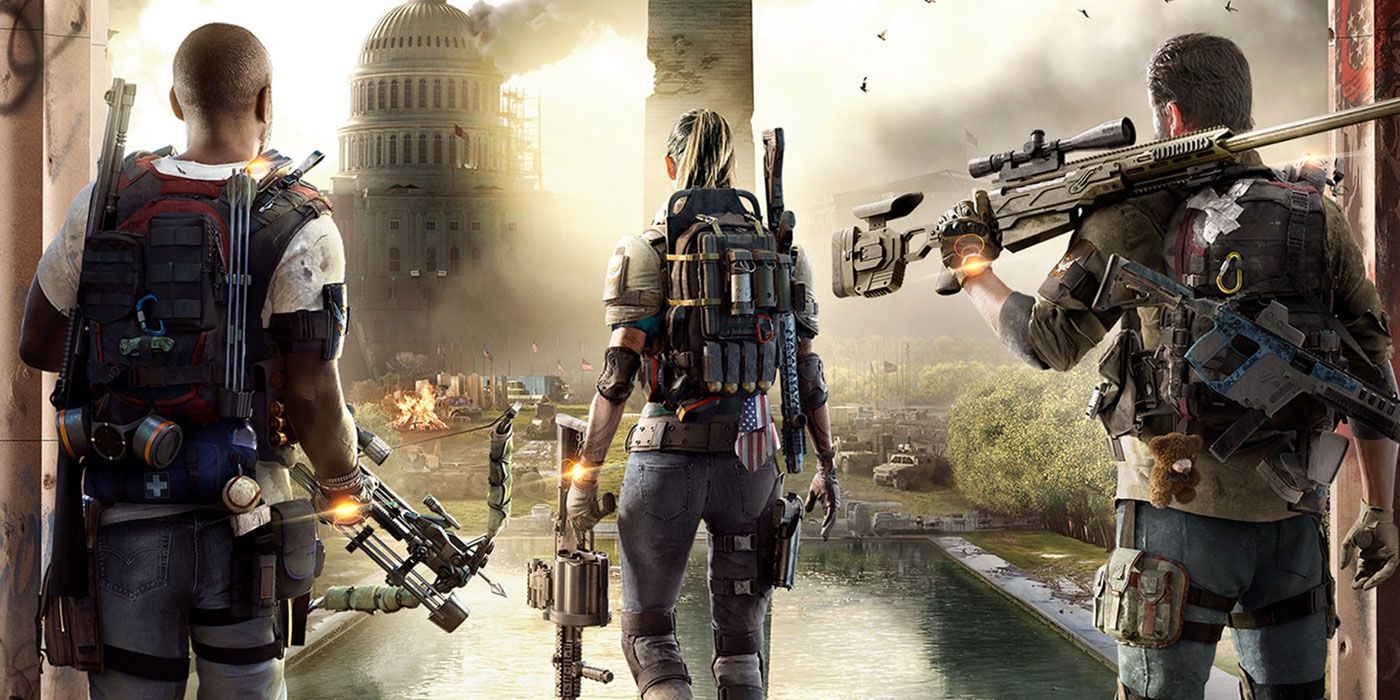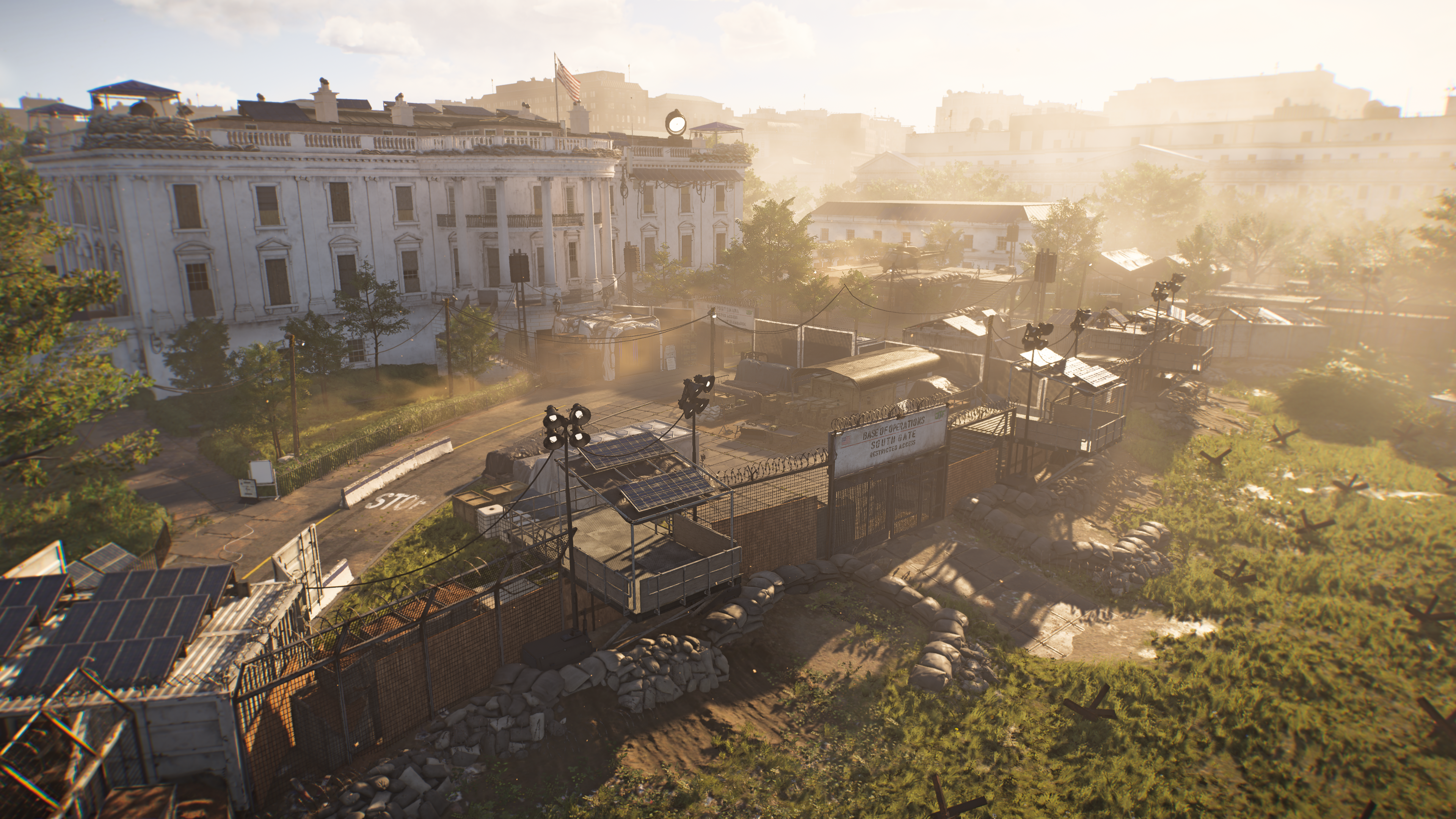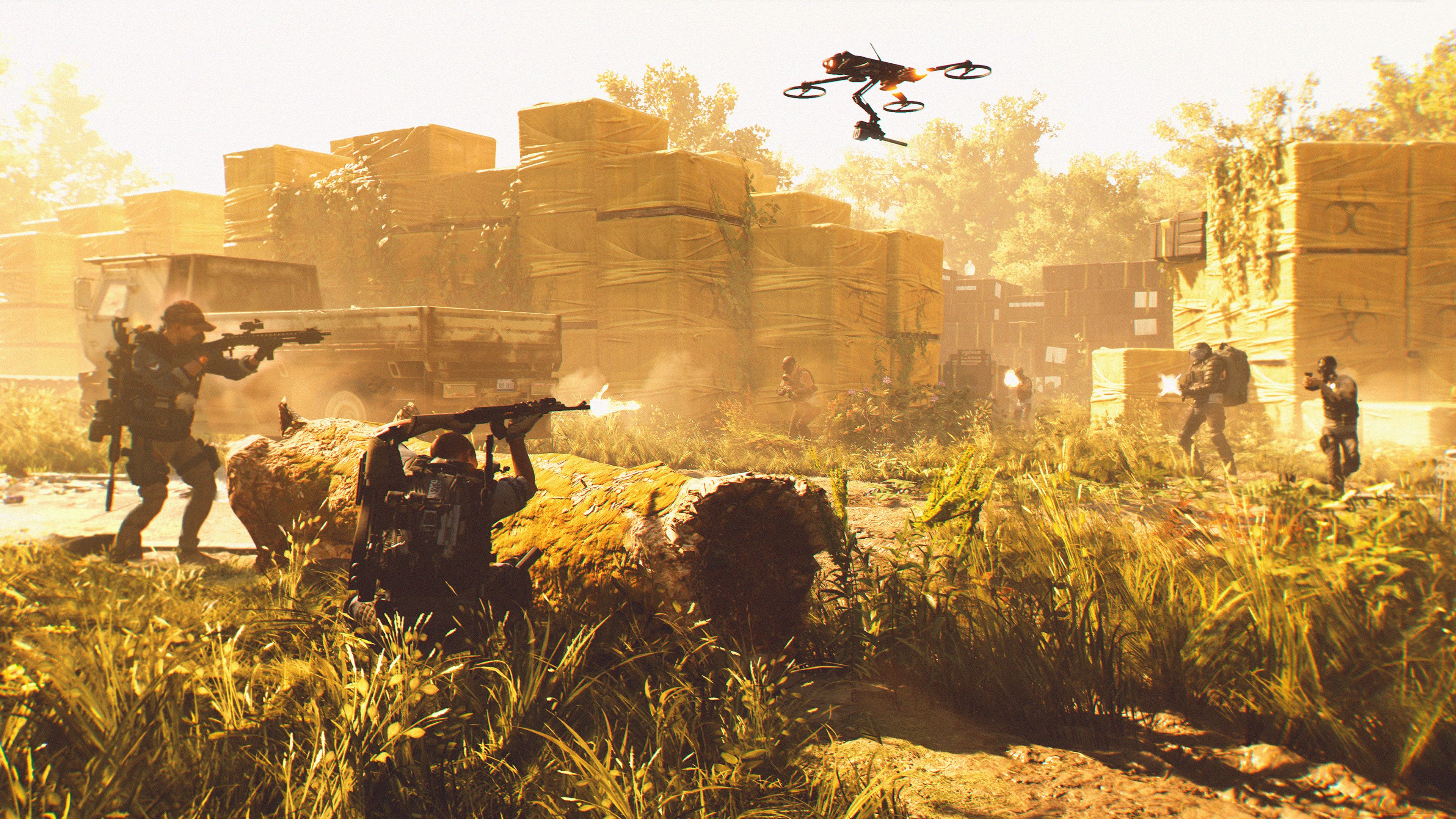For a game quite literally about the defense of the United States' capitol from anarchist-inspired splinter groups in the wake of a deadly virus, Tom Clancy's The Division 2 is mostly apolitical. But that doesn't mean it's not a solid, iterative improvement on its predecessor and a standout in the shared-world shooter genre.
The Division 2 kicks up seven months after the events of Tom Clancy's The Division and the aftermath of the Dollar Flu, a deadly virus spread on paper cash that sent New York City into chaos. You start the game as a silent Division agent in the heat of battle when you receive a distress call and a set of coordinates sending you to Washington D.C. So, off to D.C. you go to retake the White House and beef up Division presence in the capitol.
It's here that the phenomenally-crafted open world comes into view. As far as explorable areas go, The Division 2 is full of them. Not only is the open world itself quite vast, but it has verticality to it, with Safe Houses and escape routes planted everywhere from the city's sewage systems to underground in historic vaults. While not as crystal clear as the infamous reveal of the first game, it's certainly a step toward the original promise and a visual treat that begs to be revisited time and again. It's a good thing the gameplay loop offers enough to do just that.
Throughout the game's main missions, players work to recruit Division agents and allies to push back against a force of repetitive enemy types and bullet-sponge boss encounters. It's an attempt to bring society as close to its previous state as possible, but you quickly learn that's not really possible. While these main missions offer plenty by way of story, most of the unique pieces of lore in The Division 2 come from its side quests. For example, there's a small side mission that has you locating the Declaration of Independence, breaking into its vault, retrieving it and fending off those who would have it instead. Yes, it's almost certainly a National Treasure reference.
But the game's missions are also where multiplayer feels like a necessity. The Division 2 can be quite brutal with regard to difficulty spikes, even in areas matching your player level. Often enough, you could be killed by enemies while searching for a skill upgrade cache in the open world or from traveling to a locked Safe House. It's frustrating, sure, but alleviated if you matchmake with other players and bring them into your game, or vice versa. The game's missions go from boring cover shooting galleries to tactical fields of battle when you've got a full squad.
Combining skills (like drones, auto-turrets, enemy pulses, shield buffs and more) turn the tide quickly and allow players to regroup and heal up. That sort of thing isn't entirely possible while playing alone. And while the game's main missions make it easy to invite additional players to your game, side missions and general encounters are a bit more vague. Though, all it takes is a trip to the main menu's "Social" tab to call for backup, which is key when dealing with the preciseness of enemy A.I. and their spacial awareness. Seriously, is there a place to hide where they can't see you?
Then there's the loot system, which takes itself seriously enough to offer something rewarding for players after almost every encounter. Enemies will drop loot and you'll find lockboxes, backpacks and crates full of it by just exploring. This will help your player and armor levels increase slowly, and while it's still progress, it's hard to really feel those benefits until later in the game. There's a cosmetics system as well, where players can purchase and earn new accessories or clothes in-game -- or by using real money. It's fair enough to only lock cosmetics behind micro transactions, but the frequency of finding them just out in the open world is quite disappointing.
The Division 2 does have its fair share of gameplay issues, though. In addition to difficulty spikes and matchmaking nitpicks, there was a moment where the game's audio dropped out (except for minor sound effects) and all enemies and allies disappeared from line of sight. They were still there, however, and could interact (or shoot) the player character, you just couldn't shoot back. This led to hiding in a corner and waiting for the rest of the squad to complete the mission, only to be locked on a loading screen afterwards. A restart of the game solved the issue, but when missions themselves aren't exactly generous with checkpointing, it can be a hassle to have to close out of the application and hope the game will put you back into the same squad.
There are also plenty of loading screens in the game, and between waiting to load in and out of missions or fast travel between locations, there's plenty of time spent staring at a mostly static image. However, the game mostly runs smooth, with occasional frame-rate drops and map glitches, including getting stuck behind a door and having to blow yourself up with a grenade to respawn.
That said, it's nice to see another iterative sequel from Ubisoft take things to the next level. In a shared-world space that includes games like Destiny and now Anthem, The Division 2 carves a lane for itself. It enhances mostly everything about the first game and plainly offers more of it. The game fixes the Dead Zone content to make its modes actually enjoyable without its forced cursed loot, offers a unique and incredible environment to explore in Washington D.C. and it mostly just feels good to play. At the core of it all, that's the way to keep players coming back. Well, that and free content rollouts.
Tom Clancy's The Division 2 is now available for PlayStation 4, Xbox One and PC. A review copy was provided by the publisher. The game was reviewed on a PlayStation 4 Pro.




